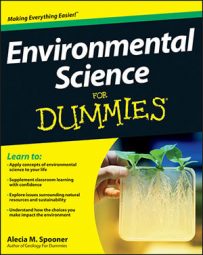The theory of evolution by natural selection explains how species evolve, or change through time — sometimes changing so much that new species are created. The variety you see in the living things all around you is a result of each organism’s unique genes.
The theory of evolution by natural selection doesn’t attempt to explain how life first began or why living things are on earth. Rather, the theory of evolution by natural selection explains the scientifically observable processes that change the physical characteristics of living things through time.
Within each cell of an organism are numerous molecules forming deoxyribonucleic acid (DNA). In eukaryotic, or multi-celled, organisms such as humans, these molecules are called chromosomes. Each chromosome contains many genes, which are like the handbook for every complex system function of the cell as well as the physical characteristics of the organism. The physical characteristics that result from the genes are called traits.
When two organisms reproduce sexually, their chromosomes combine and create a new and unique sequence of information that determines the characteristics of the offspring. As a result, the offspring have some characteristics from one parent and some from the other.
Each generation of offspring is the result of a novel combination of genes from each parent. However, sometimes random changes, called mutations, can occur by accident, or they may be caused by an outside influence.
When a mutation occurs in a gene, it changes the gene and may change the physical trait determined by that gene. Sometimes change is good, sometimes it’s bad, but most of the time it’s neither good nor bad. Here’s a quick look at the three types of traits that result from mutations:
Adaptive trait: A new physical trait that in some way helps an organism survive is called an adaptive trait. For example, a trait that makes basic living (eating, growing, and reproducing) easier for an organism is an adaptive trait. As their name suggests, adaptive traits help organisms adapt to their environment, making living less difficult and, ultimately, reproduction more successful.
Maladaptive trait: A new physical trait that disrupts an organism’s life or decreases its chances for survival is called a maladaptive trait. Maladaptive traits interfere with an organism’s ability to successfully reproduce and pass on its genes to the next generation. For example, a mutation leading to infertility is maladaptive because it interferes with an organism’s reproductive success.
Neutral trait: Some mutations are neither adaptive nor maladaptive; these mutations are called neutral. Neutral mutations sometimes lead to traits that don’t affect the organism’s ability to survive and reproduce in either a positive or negative way; hence, they’re called neutral traits. Note: Sometimes neutral mutations don’t express as any physical trait and, thus, don’t affect the organism in any way whatsoever.
When the process of selecting for or choosing an adaptive trait occurs in nature, it’s called natural selection. When humans manage this process, it’s called artificial selection. Animal breeders, farmers, and gardeners play a role in evolution by selecting one trait over another. Unlike natural selection, artificial selection reduces the genetic diversity of the organism being worked with.
According to the theory of evolution by natural selection, mutations that result in adaptive traits are passed on to offspring (and selected naturally) because they assist an organism in surviving and reproducing. Eventually, all the changes may add up, creating a new species. The development of new species from an existing population is called speciation.
The theory of evolution by natural selection explains that living things change through time as a result of genetic mutations and natural selection for the most adaptive traits.

